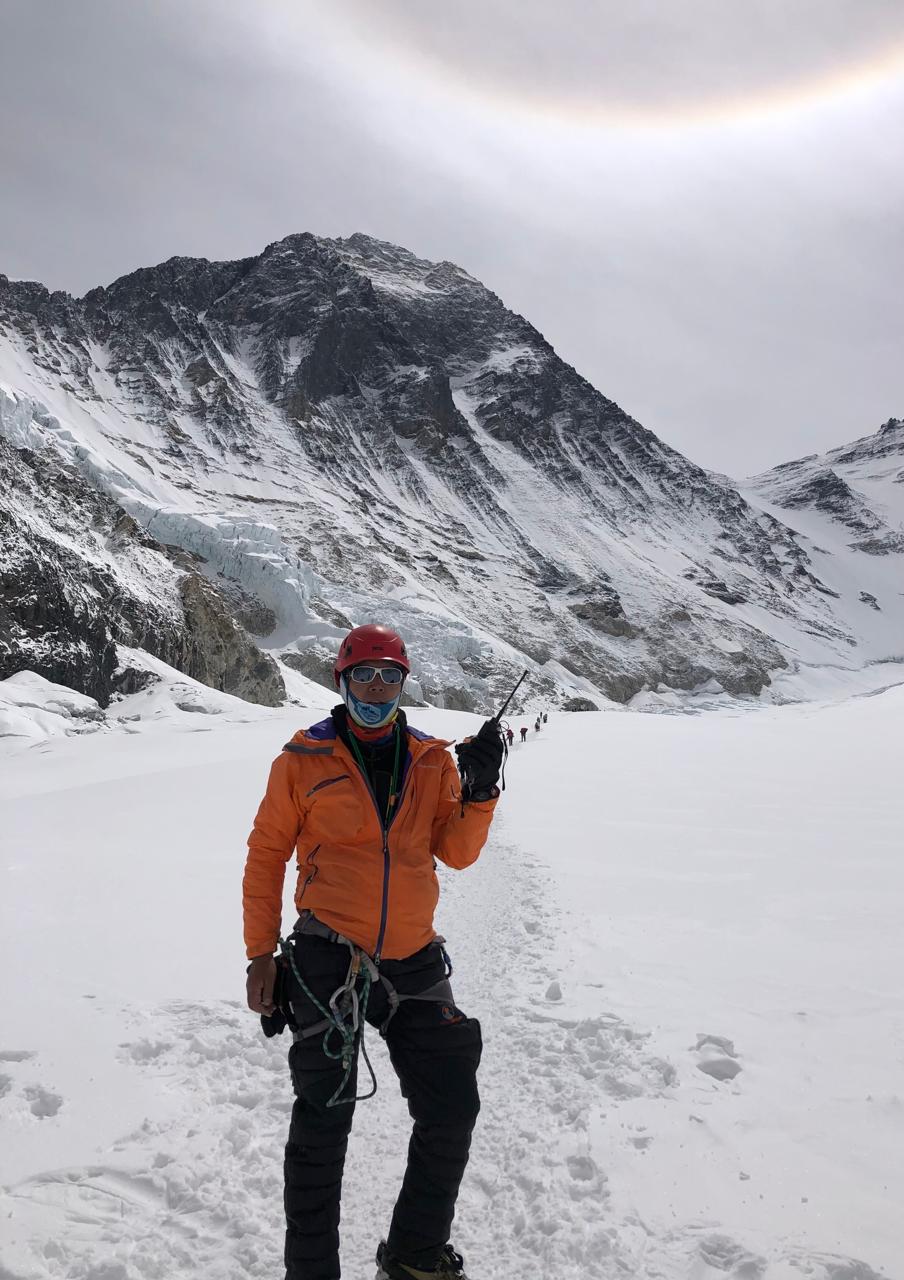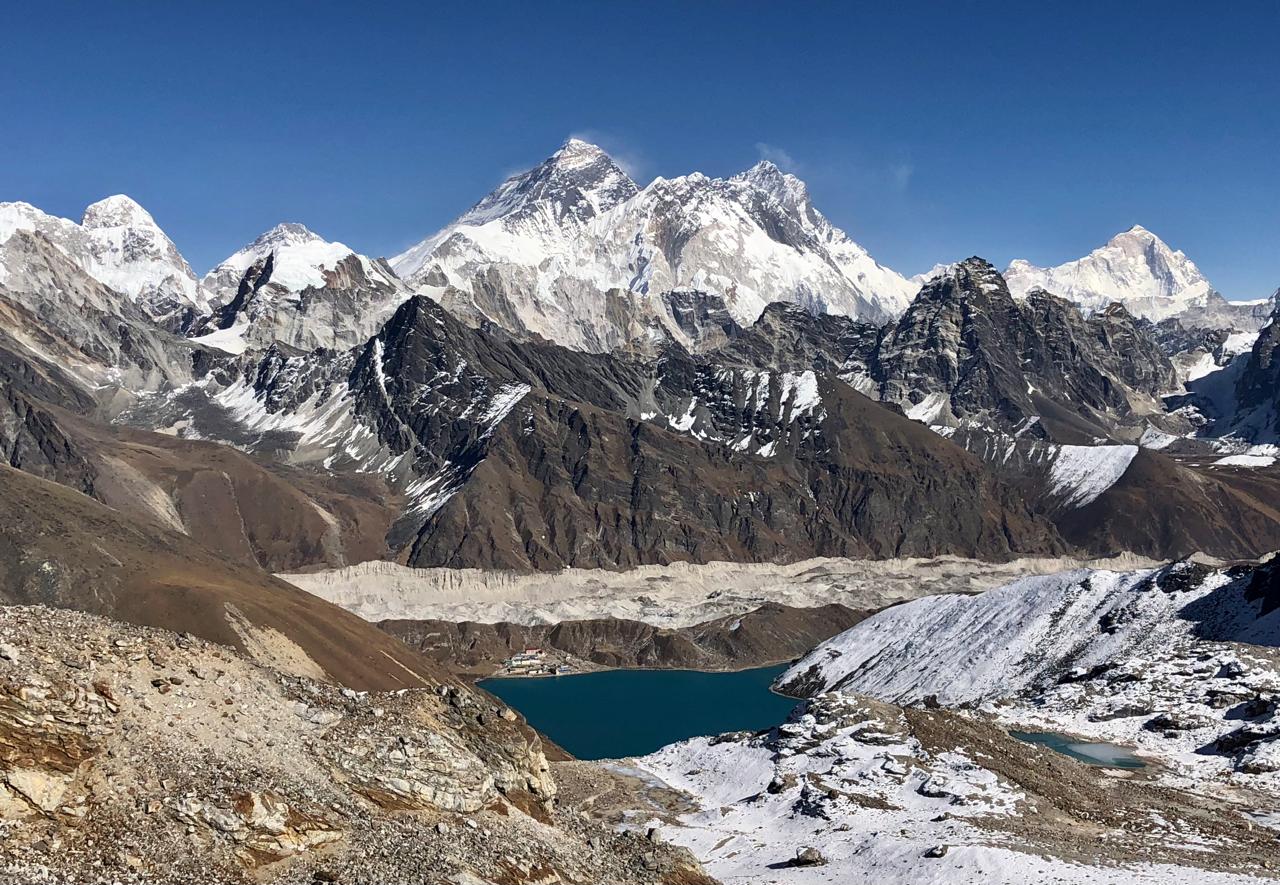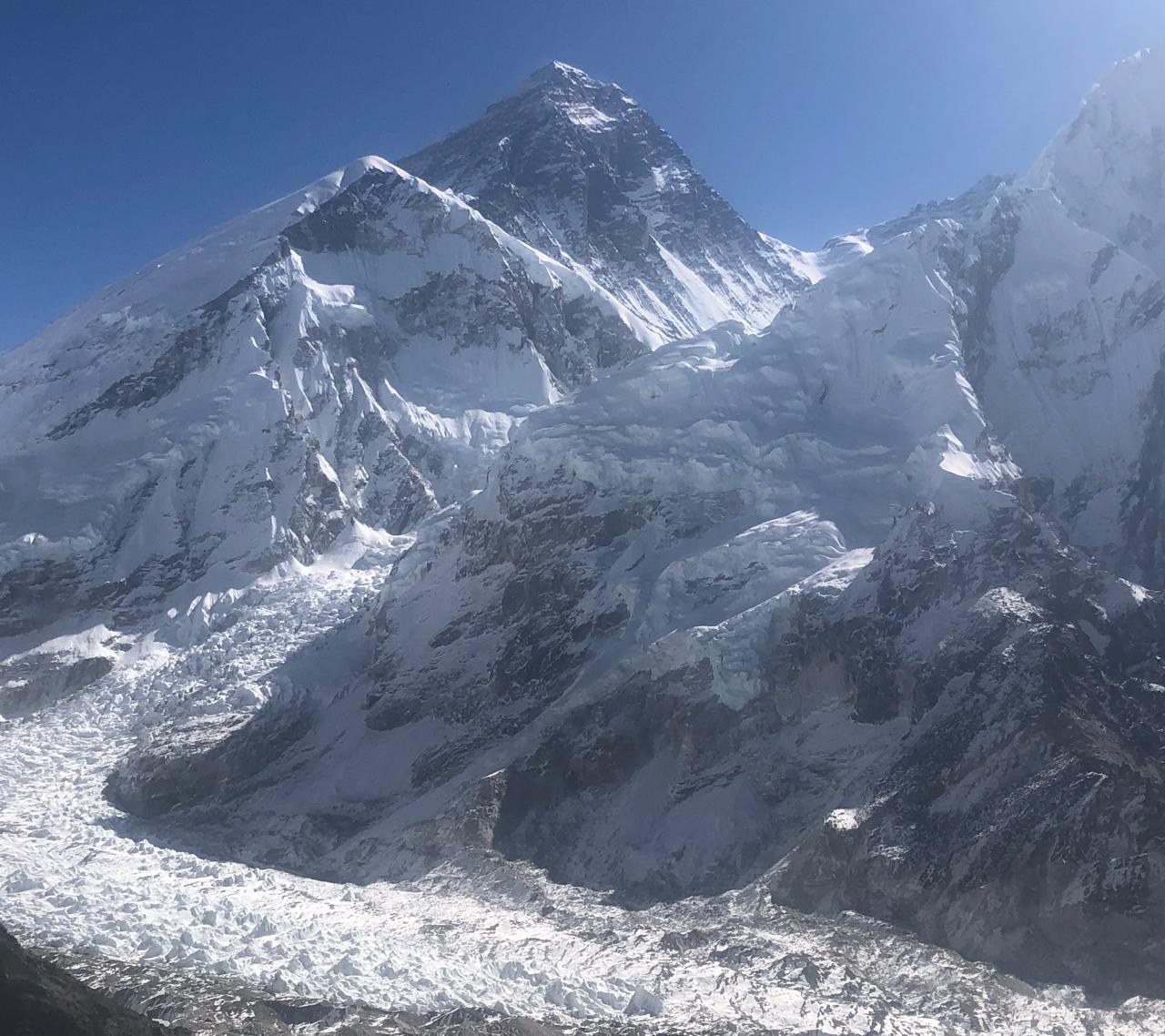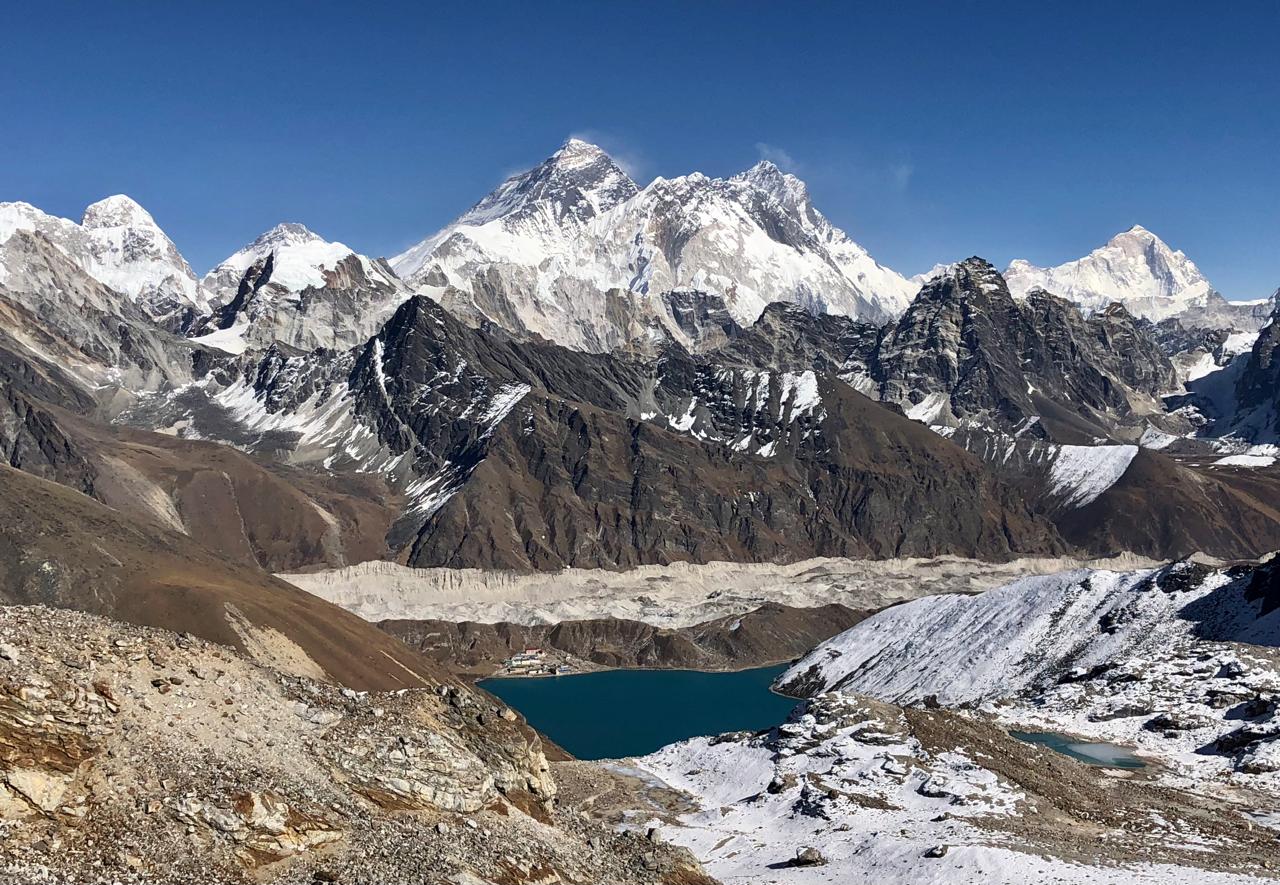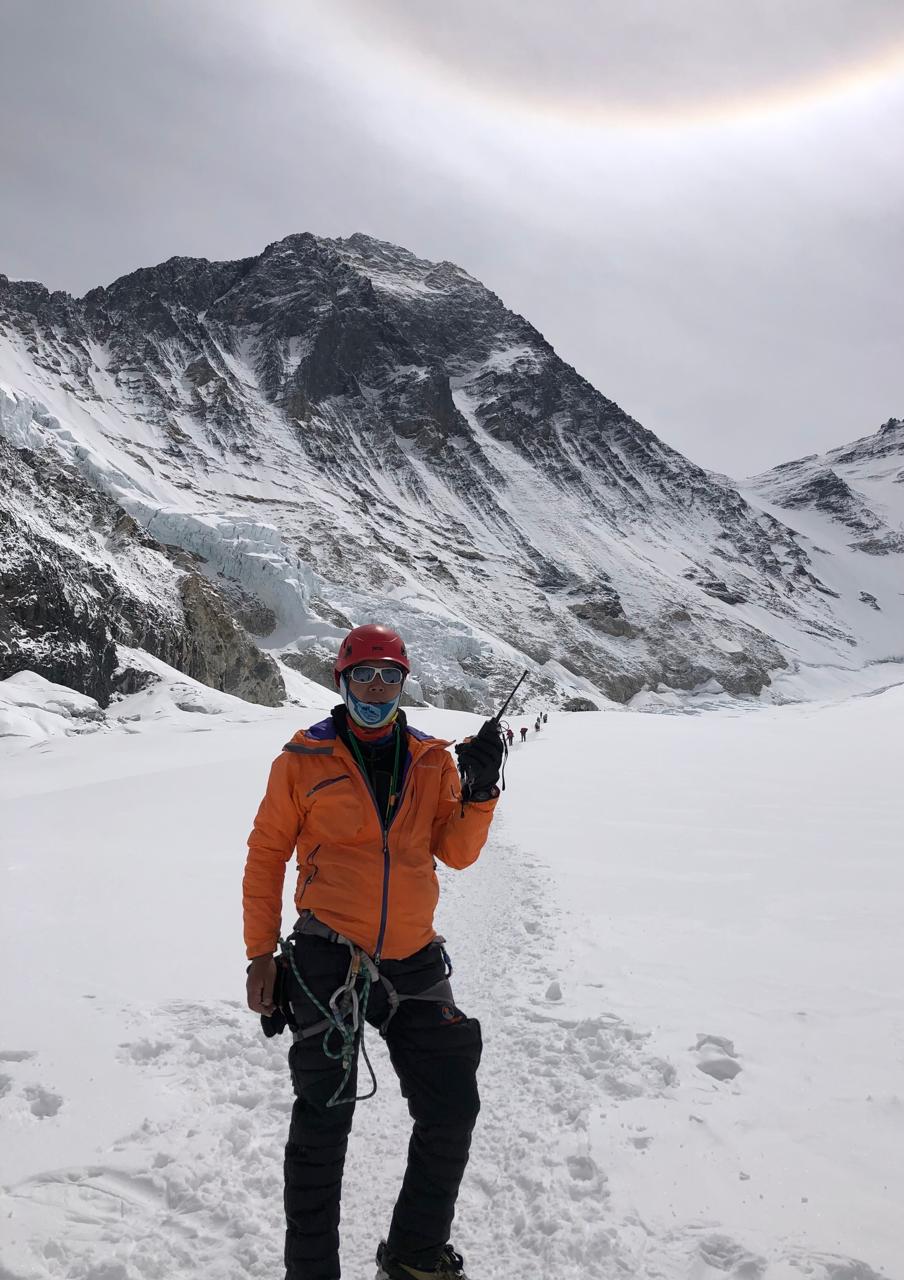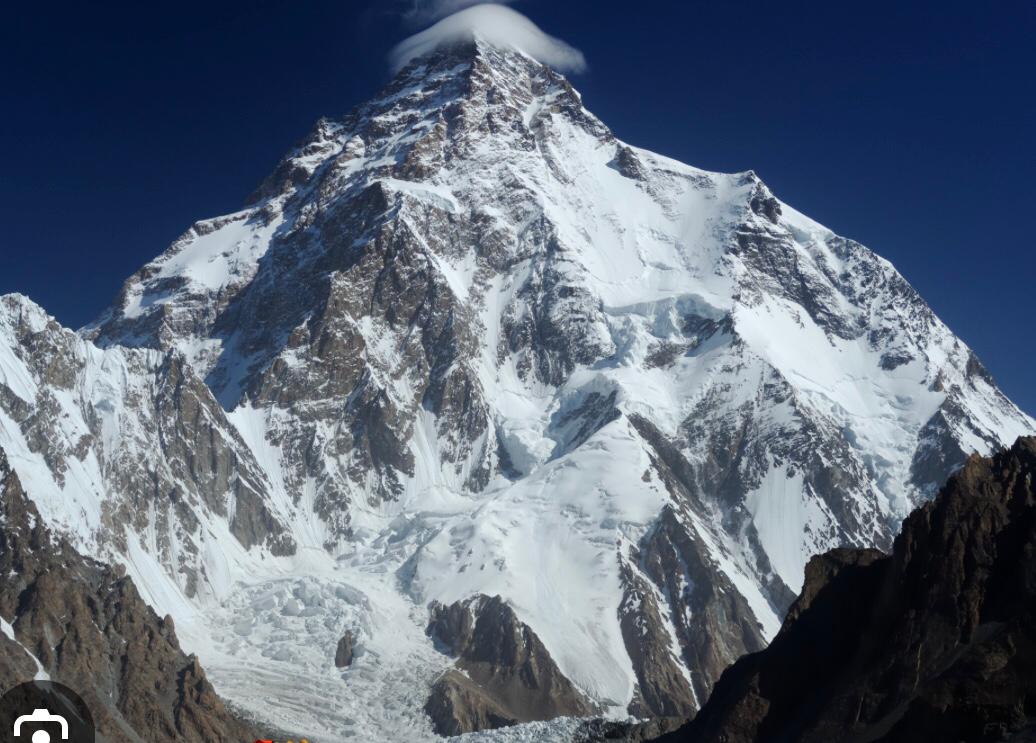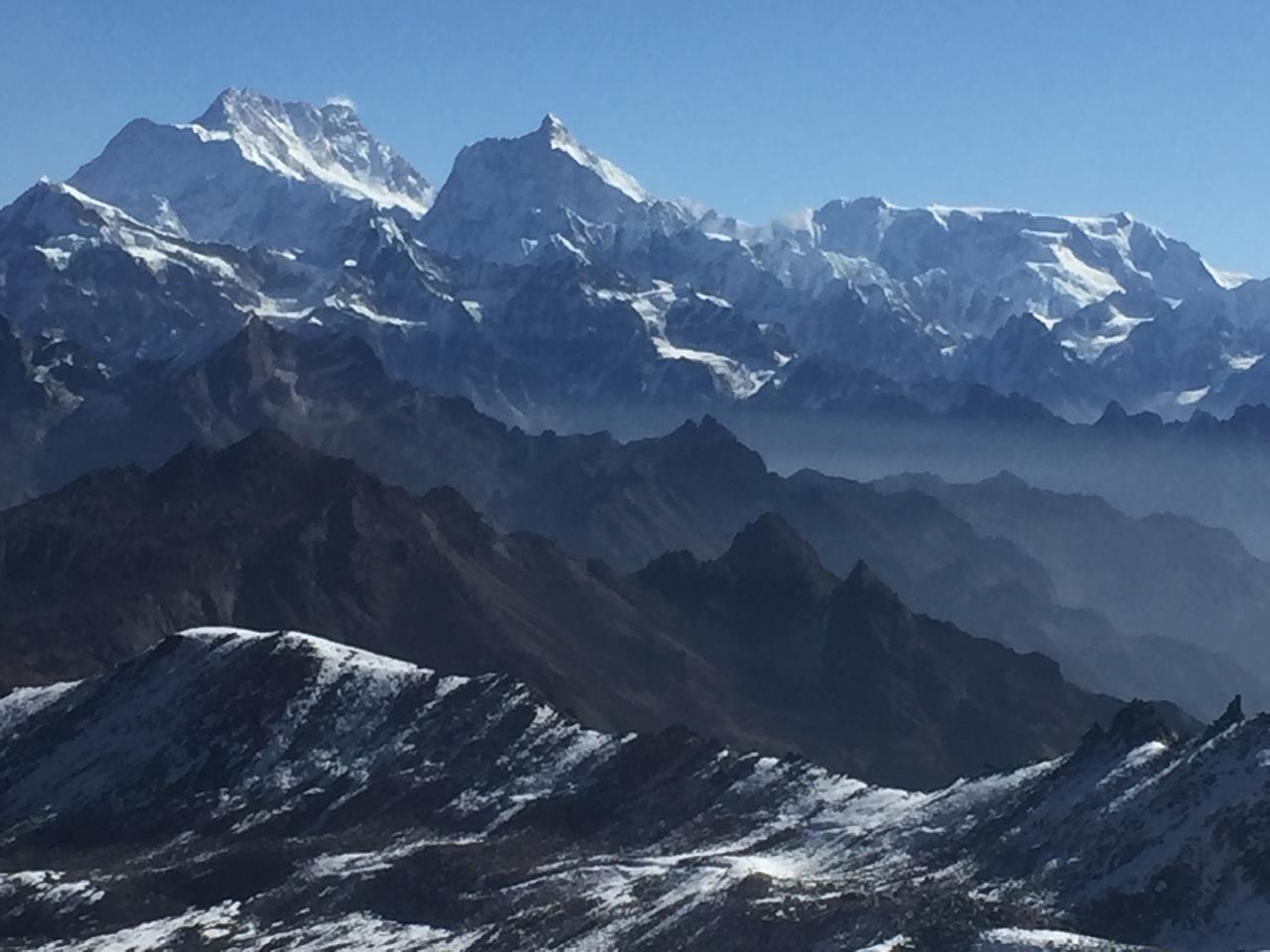The Mount Everest Expedition is the ultimate adventure, an experience that pushes physical and mental limits while rewarding climbers with breathtaking views and a once-in-a-lifetime achievement. Standing at 8,848.86m, Everest is the highest mountain in the world, attracting climbers from across the globe to challenge its towering heights. Conquering Everest is more than just a physical feat, it is a journey of endurance, resilience, and determination, demanding meticulous preparation and unwavering commitment.
At Ticino Treks and Expedition, we provide a well-structured and fully guided journey to the top of the world. Our team of expert Sherpa guides ensures your safety and success as you navigate through glaciers, icefalls, and high-altitude conditions. With decades of experience, our guides are not only skilled climbers but also seasoned experts in high-altitude survival and risk management. From Base Camp to the summit, we take every precaution to maximize your safety and increase your chances of a successful ascent.
This expedition takes you through the heart of the Khumbu region, starting with a thrilling flight to Lukla and a trek through picturesque Sherpa villages, lush forests, and stunning glacial landscapes. The route follows the classic South-East Ridge, the same path taken by Sir Edmund Hillary and Tenzing Norgay in 1953. Along the way, you'll acclimatize at key points such as Namche Bazaar, Tengboche, and Everest Base Camp before undertaking the rigorous climb through the Khumbu Icefall, Western Cwm, Lhotse Face, and the Death Zone above 8,000m.
Reaching the summit of Everest is a moment of unparalleled triumph, offering a breathtaking panorama of the world's highest peaks bathed in the golden glow of sunrise. It is an achievement that few can claim and a memory that lasts a lifetime. Whether you are a seasoned mountaineer or taking on your most ambitious challenge yet, Ticino Treks and Expedition provides the expertise, logistical support, and top-tier equipment necessary for a safe and successful ascent. Join us for the ultimate adventure and make your dream of standing on top of the world a reality.
Trip Notes:
Best Time to Visit:
-
Spring (March-April): Best weather conditions for trekking and climbing.
-
Autumn (October-November): Another optimal window with favorable weather for climbing and clear skies.
Expedition Highlights:
-
Everest Base Camp (18,000 ft): The starting point of the expedition, offering spectacular views of the Khumbu Icefall.
-
Tengboche Monastery: A unique and spiritual place with stunning views of Everest and other peaks.
-
Kalapathar: Famous for the most incredible sunset and sunrise views of Mount Everest.
-
Namche Bazar: A vibrant Sherpa village located in the Khumbu region.
Climbing Route:
The most common route for summiting Everest is the South-east Ridge, though it can also be attempted from the northern side, Tibet. The climbing route involves crossing dangerous terrain, including glaciers, the Khumbu Icefall, and navigating through challenging conditions like high winds, snowfall, and avalanches.
Difficulty Level:
This expedition requires excellent physical fitness and mountaineering experience. It’s not suitable for children or older individuals due to the extreme altitude and physical demands.
Key Challenges:
-
Altitude & High-altitude sickness: Acclimatization is crucial, and climbers must be prepared to handle the symptoms of altitude sickness.
-
Death Zone: Above 8,000 meters, oxygen levels become critically low, and this area is known as the "Death Zone" due to the increased risk of fatal accidents.
-
Weather Conditions: Sudden changes in weather, including snowfall and avalanches, can make the climb even more perilous.
-
Oxygen: Supplemental oxygen is often used above 8,000 meters to help climbers cope with low oxygen levels.
Training & Preparation:
-
Physical Fitness: Climbers should have a high level of physical conditioning, including cardiovascular and strength training.
-
Altitude Training: It’s essential to acclimatize properly to avoid altitude sickness.
-
Climbing Skills: Mountaineering skills such as ice climbing, crevasse rescue, and glacier travel are essential.
Safety Considerations:
-
Avalanches: The region is known for avalanches, especially near the Khumbu Icefall.
-
Summit Push: The summit push can take several days, and climbers will need to be aware of weather conditions and oxygen usage.
-
Climbing Equipment: Essential gear includes climbing boots, crampons, harnesses, ice axes, helmets, sleeping bags, and oxygen tanks.
Permits Required:
-
Sagarmatha National Park Permit: Required for trekkers and climbers.
-
Climbing Permit for Mount Everest: Issued by the government of Nepal.
-
TIMS (Trekkers’ Information Management System) Card: Issued by the Trekking Agencies’ Association of Nepal (TAAN).
Important Notes:
-
Physical Fitness & Experience: This is a demanding expedition that requires a strong mental attitude and physical endurance.
-
Weather & Conditions: The weather can be unpredictable and hazardous, and climbers should be prepared for extreme cold, strong winds, and possible storms.
Summit Timeframe: Depending on weather conditions, summit attempts typically occur between late April and early May or late October and November
